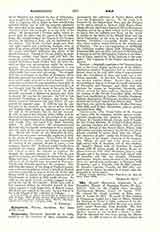

Rale (RASLE), SEBASTIAN, missionary, b. at Pontarlier, Diocese of Besancon, France, January 20, 1654(?); shot by the English force attacking Norridgewock Mission, Maine, August 23, 1724. He entered the Jesuit novitiate at Dole, province of Lyons, in 1675. He made his first studies at Carpentras, taught for a time at Nimes, finished his theology at Lyons in 1688, volunteered for the missions in America, and sailed the next year with a party under Frontenac from Rochelle. His first missionary work was at an Abenaki village near Quebec, whence he was recalled to Quebec in 1691. Next he labored for two years among the Illinois Indians. In 1694 he went to the Abenaki mission on the Kennebec. The colonists of New England regarded with suspicion and hatred the arrival of a Frenchman in the midst of savages who were for the most part hostile to the English. The latter presumed that the missionary would do his best t) keep alive this hostility. Hence the Indian outrages perpetrated on the eastern frontier of New England during Ride’s long residence among the Abenakis were for the most part attributed, either directly or indirectly, to him. Rile made his headquarters at Norridgewock, where in 1698 he built a church. During Queen Anne’s war, frequent attacks were made by the English upon Norridgewock, and in 1705 the church was burned. Rale and his converts escaped capture by flight.
The Treaty of Utrecht, 1713, established relatively peaceful conditions for a short time. A conference was held by the English and the Indians at Portsmouth, of which we have two conflicting reports. According to Penhallow (Indian Wars) the Indians acknowledged themselves subjects of Great Britain, who, in return, promised them free possession of their lands about the Kennebec. Rale denies, however, that the Indians promised subjection to England. His source of information was the verbal report of the Abenakis, who, if they had made any promises, carefully concealed them from the missionary. It is most likely, however, that the savages had no idea of what a promise of subjection to England meant. This is Parkman’s opinion (Half-Century of Conflict, 1, 212-13). Ere long English encroachments upon Indian lands again stirred up the Abenakis. As a result, hostilities broke out in September, 1721. In the following January an English expedition started for Norridgewock with the purpose of apprehending Fr. Rale. The missionary escaped, however, and soon returned to his mission. In August, 1724, another English expedition set out to capture him. The attacking party came upon Norridgewock unexpectedly; the Indians were routed, and fled, leaving behind them many wounded and dead, among the latter their beloved missionary. Rate’s long residence with his flock, over a quarter of a century, gave him an intimate knowledge of their tongue. As evidence of this he prepared a dictionary of the Abenaki language, the MS. copy of which is preserved in the library of Harvard College. Some Indian prayers and a catechism, still in use among the Penobscots and Passamaquoddies, are attributed to him. In “The Jesuit Relations”, LXVII, are two lengthy letters written by him from Norridgewock.
H. C. SCHUYLER

